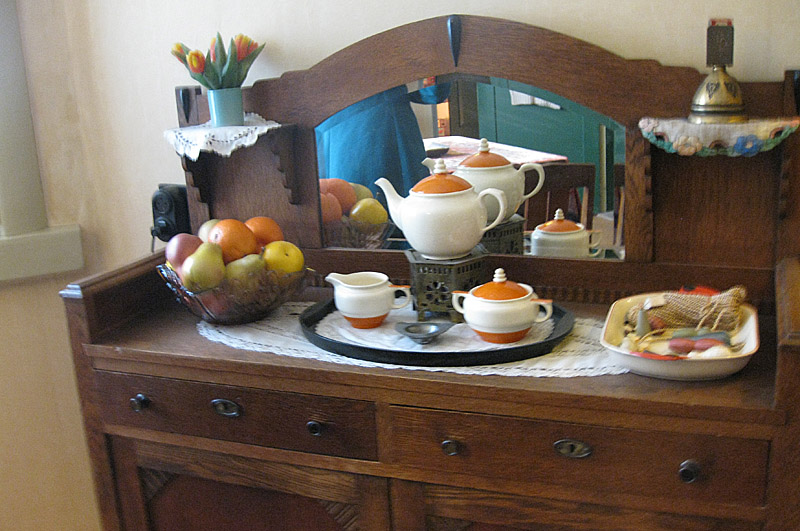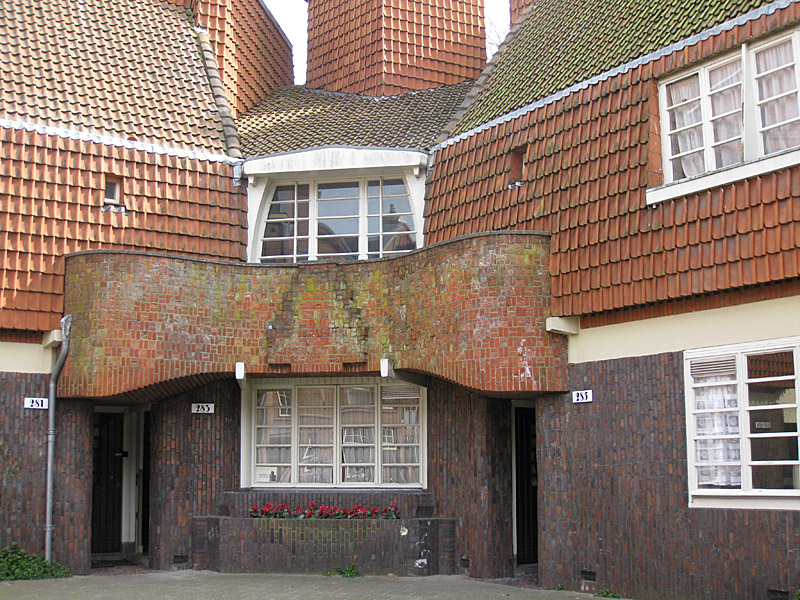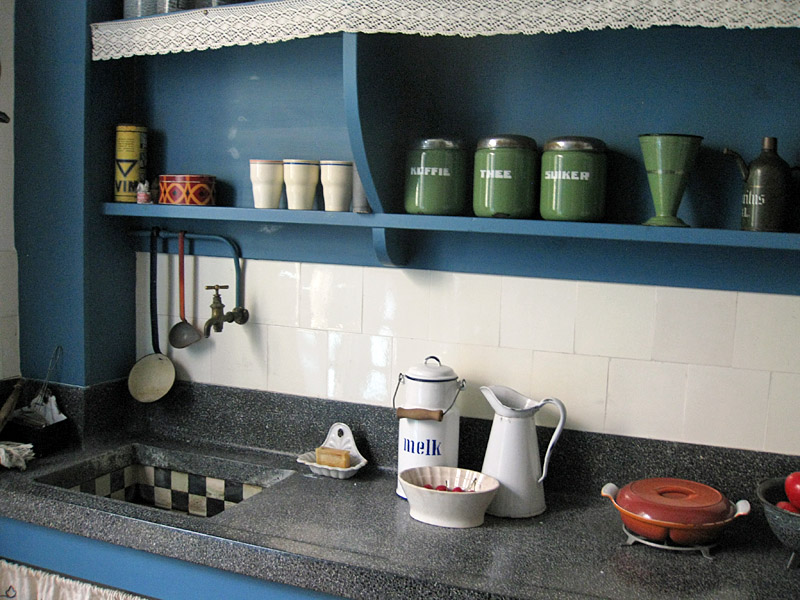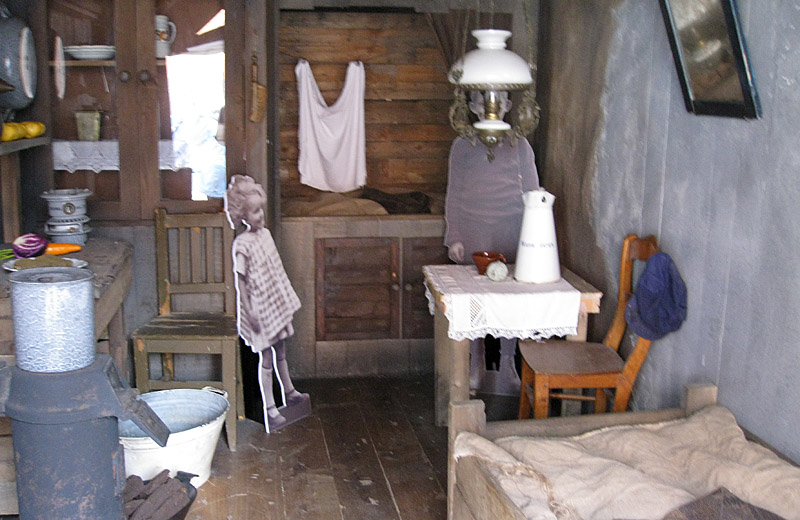Museum het Schip Masterpiece of Amsterdam School Architecture
Museum Het Schip is one of the best examples of Amsterdam School architecture in Amsterdam. Het Schip is a public housing complex designed by architect Michel de Klerk (1824-1923).
A visit to the museum starts in the former post office, followed by a walk around the residential complex, then a visit to the working class apartment, a model home, the slum dwelling and ends in the museum cafe where you can also admire Amsterdam School street architecture.
Highlights
• Former Post office
• Working Class Apartment
• Slum Dwelling
TIP: Book a ticket for Museum Het Schip, including a 45-minute guided tour

Post Office: A Glimpse into Everyday Life
Your visit of Museum het Schip starts in the reception area of the former post office that has preserved its original counters and also the old telephone booth, complete with a vintage phone once operated by a lady-operator.
At the beginning of the twentieth century, workers received their wages in cash in the local pub most of the money was spent right away.
Only the wealthy held accounts. They withdrew their money at the main post office in central Amsterdam, now Magna Plaza Shopping Centre. For the worker from the Spaarndammer neighbourhood that location was not only distant but also intimidatingly posh.
Did you know that in those days, making a phone call required an appointment. Families dressed in their Sunday best paid one guilder per minute to speak while the operator listened in. The “eavesdroppers” on the phone booth refer to this practice.

Working class apartment: Comfort with Dignity
The construction of new social housing projects between 1914 and 1921 focuses on the well-being of the worker. The building should be a pleasure for the eye and the inside was to be comfortable.
Until the beginning of the twentieth century, workers lived in miserable conditions, but with the new Social Housing Act this changed. From this time on apartments included living room, kitchen and sometimes even two bedrooms.

A New Way of Living
Once settled in their new homes, the worker also had to adopt a new way of loving. No more gathering in pubs or hanging about in the streets, family life shifted indoors.
The modest kitchen and central dining table encouraged togetherness. Windows were placed high so that peeking outside was impossible. From now on also a working class family sat together at the table for meals and entertainment.

Step back in time: experience life in a real slum
Did you know the Netherlands was a pioneer in improving housing conditions? Early 20th century, Amsterdam was expanding and there was a housing shortage. Working-class families lived in small, dark one-room homes with no ventilation and no sunlight. These slum dwellings were a breeding ground for diseases.
But in 1901, this changed with the introduction of the Housing Act. This was the beginning of social housing. The government, housing corporations and architects joined forces to build affordable and healthy homes for everyone. The slum dwellings slowly disappeared and made way for better living space.
Experience it yourself: Next to the museum is a viewing box—a 16-square-metre replica of a slum dwelling, built inside a shipping container.

The Façade: A Work of Sculptural Art
Walking around the block-long residential complex, you will notice that the facade is more than just a wall: it is a sculpture in itself. Flowing lines, turrets, ornamental brickwork, and whimsical brick sculptures adorn the structure.
Michel de Klerk, the architect of the complex, disliked exposed drainpipes, so he devised an elegant solution: the lower roof edges are lined with grooved tiles that discreetly channel rainwater away.

Getting there
Address
Museum Het Schip
Spaandammerplantoen 140
Amsterdam
Opening hours
Tuesday to Sunday 11:00-17:00
Public transport
Bus: From Amsterdam Centraal Station, take bus 22 to Sloterdijk Station. Get off at the Spaarndammerstraat stop. The museum is a 5-minute walk from there.


